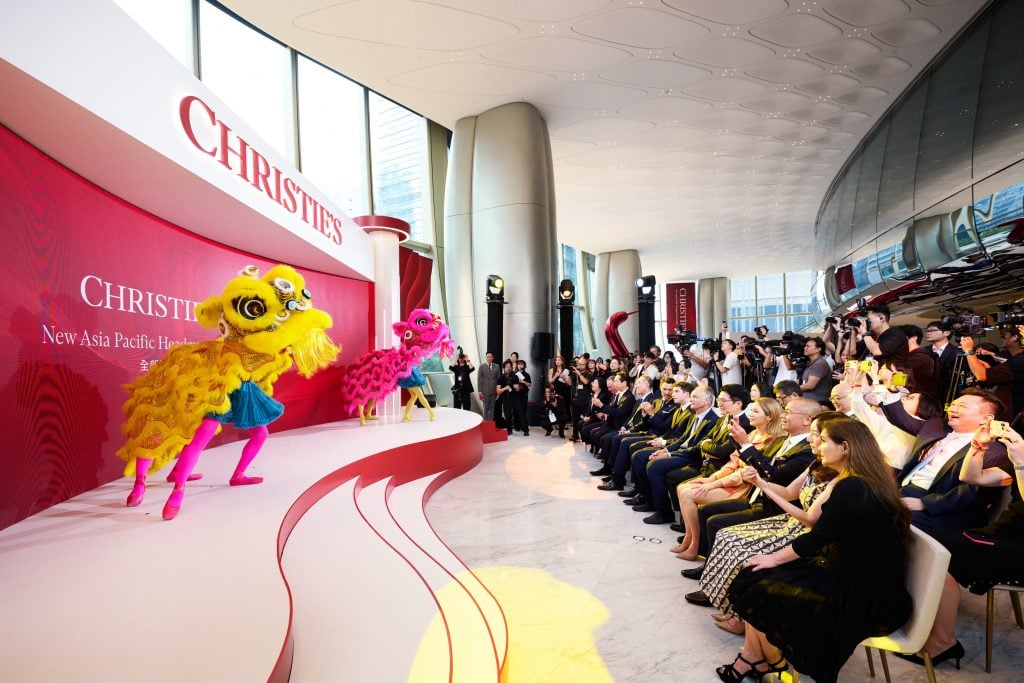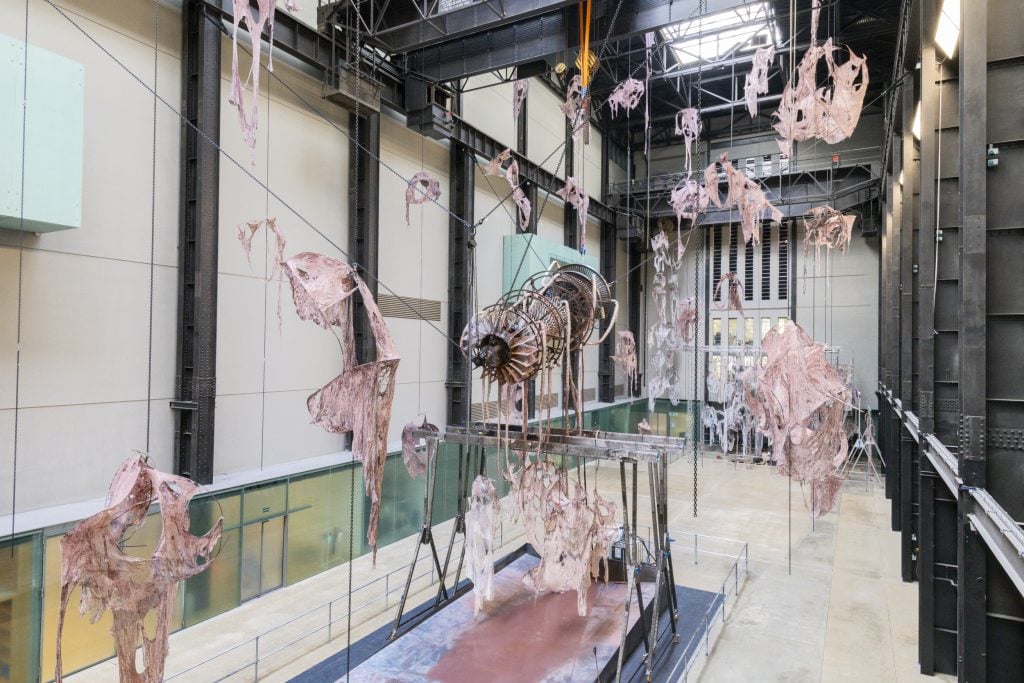The Big Picture is excerpted from The Asia Pivot, Artnet Pro’s biweekly members-only newsletter providing mission-critical analysis, insights, and exclusive intelligence on developments in Asia’s art markets, with a focus on business opportunities and challenges. Subscribe here to receive it directly to your inbox.
Time races by, and 2024 will be over before we know it. Here’s a quick recap of the top market moments of the year.
Asia Auctions Revamp
In the second half of the year, Christie’s, Sotheby’s, and Bonhams joined Phillips in moving into new Asian headquarters in Hong Kong, and the traditional biannual cross-category auction week there was completely disrupted. Individual sales are now spread out across the calendar: is this working?
Christie’s, which had the glitziest launch, appeared to be able to hold the fort at its new spot at the Henderson, despite high-profile blue-chip Western works selling for below their estimates, thanks to white glove sales of Asian art and antiquities (see the State of Play section below).
Archrival Sotheby’s, which opened a retail and exhibition space, Maison, this past summer, won headlines with the sale of the storied 1954 Mark Rothko painting at its inaugural auction. But while it went for $32.5 million, that was 30 percent below what it made in 2015. The event’s sell-through rate was a meager 65 percent, and the numbers were not better than last year’s.
Phillips also faced challenges, with its most recent November Hong Kong sale bringing $22 million, a slight decline from a similar sale last year. Bonhams’s recent inaugural sale totaled more than $1.75 million after fees, with a sell-through rate of 64 percent.

The opening ceremony at Christie’s new Asia headquarters at the Henderson in Hong Kong, September 20, 2024. Courtesy Christie’s Images Ltd.
China’s Economic Downturn
The decline in art auction sales is a symptom of China’s economic slowdown. The signs were already obvious during Art Basel Hong Kong in March, which had slow sales and cautious collectors. In August, the Shanghai-founded ART021 fair’s first venture in Hong Kong fell short of expectations. And last month, ART021 and West Bund reported predictably sluggish sales in Shanghai, with most works going for $15,000 or less. Photofairs also canceled its 2025 Hong Kong debut.
There have been notable leadership changes at top galleries in the region: Leng Lin left Pace Gallery, Leo Xu departed David Zwirner, and Elaine Kwok exited Hauser and Wirth. Blue-chip dealer Lévy Gorvy Dayan and Wei closed its Hong Kong space. Meanwhile, Hong Kong collector Adrian Cheng stepped down as CEO of New World Development, a leading property developer, which is facing financial woes.
Global Exposure
On the bright side, Asian representation has risen on the global stage this year. At the Venice Biennale, artists with Asian roots and institutions from the region had a notable presence in the main exhibition, “Foreigners Everywhere,” and concurrent exhibitions throughout the city. The number of Asian and Asian-descended artists in this year’s Biennale nearly tripled compared to 2022.
Art Basel in June saw an increase in Asian galleries by 20 percent from last year, and Asian galleries, artists, and artists of Asian diaspora received unprecedented exposure in Miami earlier this month. Untitled Art even embraced the curatorial theme “East Meets West.”

Hyundai Commission: Mire Lee: Open Wound installed in the Turbine Hall at Tate Modern, 2024. Photo: Lucy Green, © Tate.
Korea Everywhere
South Korean artists gained particularly intense global attention this year. After being highly visible in Venice, they were in the spotlight during Frieze London, with Haegue Yang at the Hayward Gallery and Mire Lee at Tate Modern. The Met marked the 25th anniversary of its Korean Gallery with “Lineages: Korean Art at the Met,” while Lee Bul’s Genesis Facade Commission made waves. Additionally, the Smithsonian’s National Museum of Asian Art appointed Sunwoo Hwang as its first Korea Foundation Curator of Korean Art and Culture.
At the same time, the Korean art market seems to be struggling. The Korea Art Authentication and Appraisal Institute reported a 27.2 percent drop in auction sales in the third quarter year-on-year, to $17 million, and sales at Frieze Seoul and Kiaf Seoul were reportedly slow.
What to Watch Out for in 2025
Japan has quietly been making a comeback in the international scene. Japanese artists Yayoi Kusama, Yoshitomo Nara, and Takashi Murakami remain the top-selling living artists from Asia, and the country has the second-largest auction market in the region, after China, according to the Artnet Price Database. Japanese collectors have also been buying big at international art fairs. Events like Art Collaboration Kyoto and Art Week Tokyo are drawing attention worldwide, and releasing a new report on its art industry last week, economist Clare McAndrew argued that Japan “deserves a bigger market,” given its tremendous wealth.
India is also showing great potential, though its economy grew less than expected in the third quarter. Countries in Southeast Asia, such as Thailand, Indonesia, and the Philippines, are also worth paying attention to, as art events proliferate there.
That’s a wrap for 2024. The Asia Pivot will return on January 15. Happy Holidays!
This post was originally published on this site be sure to check out more of their content





